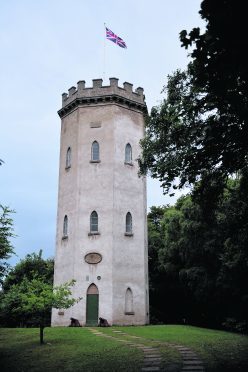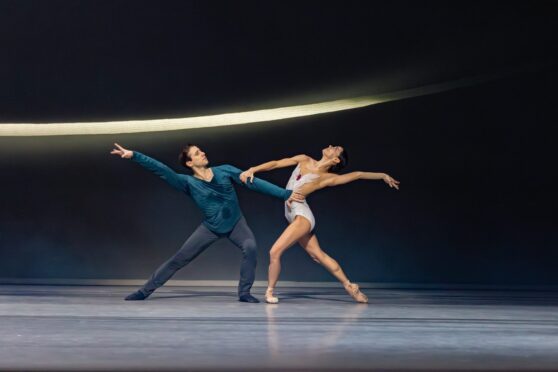History has been made in Elgin with the opening of a new exhibition at Elgin Cathedral which features more than 100 mediaeval carved stones on public display for the first time in 20 years.
Among them is a 700-year-old carving of an important bishop, awash with colour. The effigy of Bishop Archibald is one of several which are spread across eight rooms in the cathedral’s north and south towers.
The exhibition features expressive carved faces, flora and fauna, animals including lions and lizards, and a section of a rose window dating to the 1200s. Fragments of mediaeval window glass from the cathedral will also be on display, on loan from the Elgin Museum.
Each stone is theatrically lit to reveal the detail of the carvings using LED lighting and visitors can explore the collection through a touchscreen digital database.
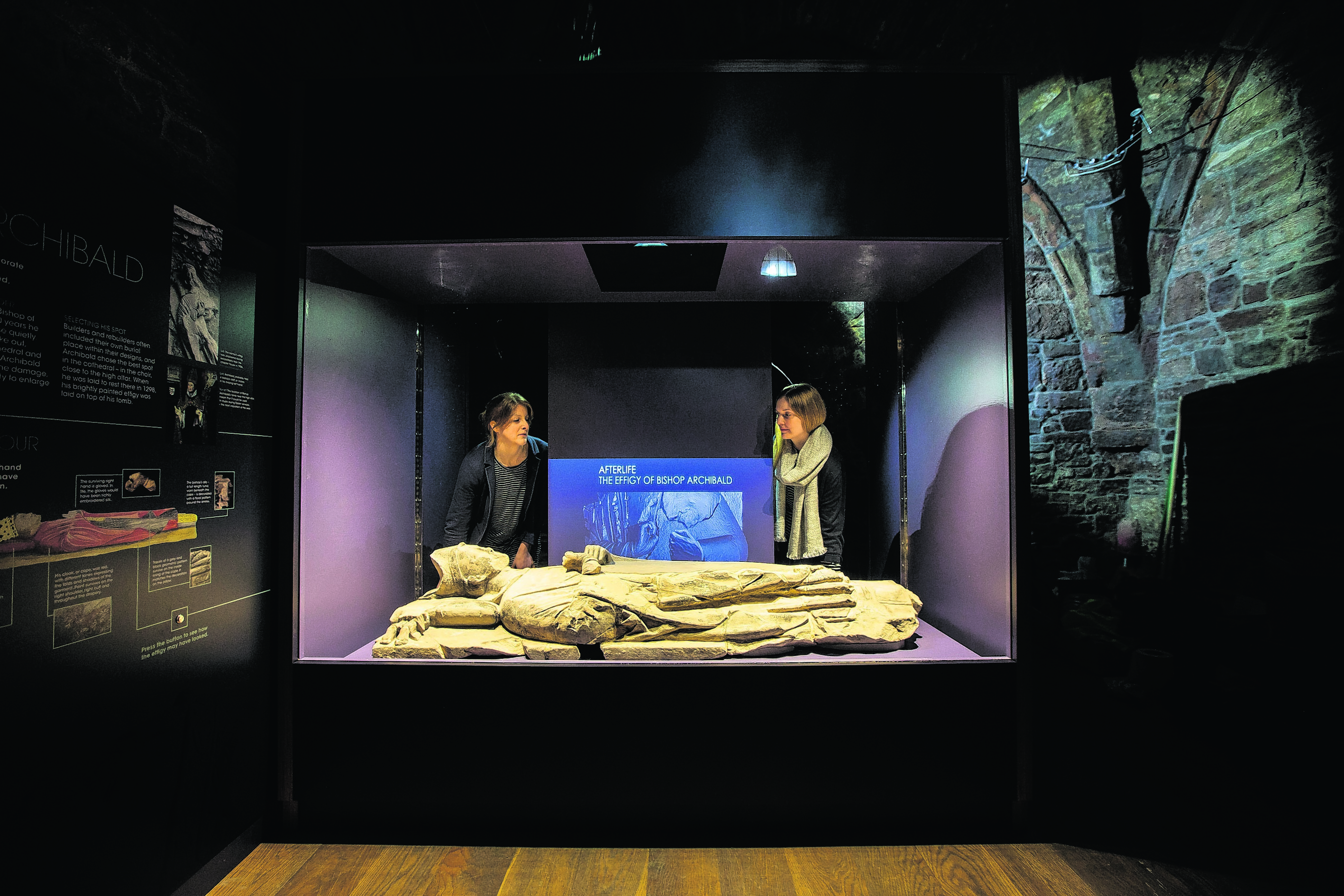
More than £300,000 has been invested in conserving, interpreting and displaying the stones and the project has seen experts from Historic Environment Scotland work with external academics and partners locally in Elgin and at Edinburgh Napier University to catalogue, conserve and ultimately tell the story of the cathedral as never before.
Stephen Duncan, director of commercial and tourism for Historic Environment Scotland, said: “It’s great to see these stones coming home just in time for the start of the new visitor season in Scotland’s Year of Innovation, Architecture and Design.
“A great amount of effort has gone into the realisation of this exciting exhibition. From our conservation specialists who analysed tiny traces of paint from a 13th-century sculpture of Bishop Archibald to our partners at Edinburgh Napier University who used these findings to develop a lighting display, showing what it once might have looked like when freshly painted.
“This exhibition provides visitors with a fantastic opportunity to discover more about the cathedral, its architecture and history. As well as the chance to view the stones and their carvings up close, it also offers a rare glimpse into what Elgin Cathedral could have looked like some 700 years ago.”
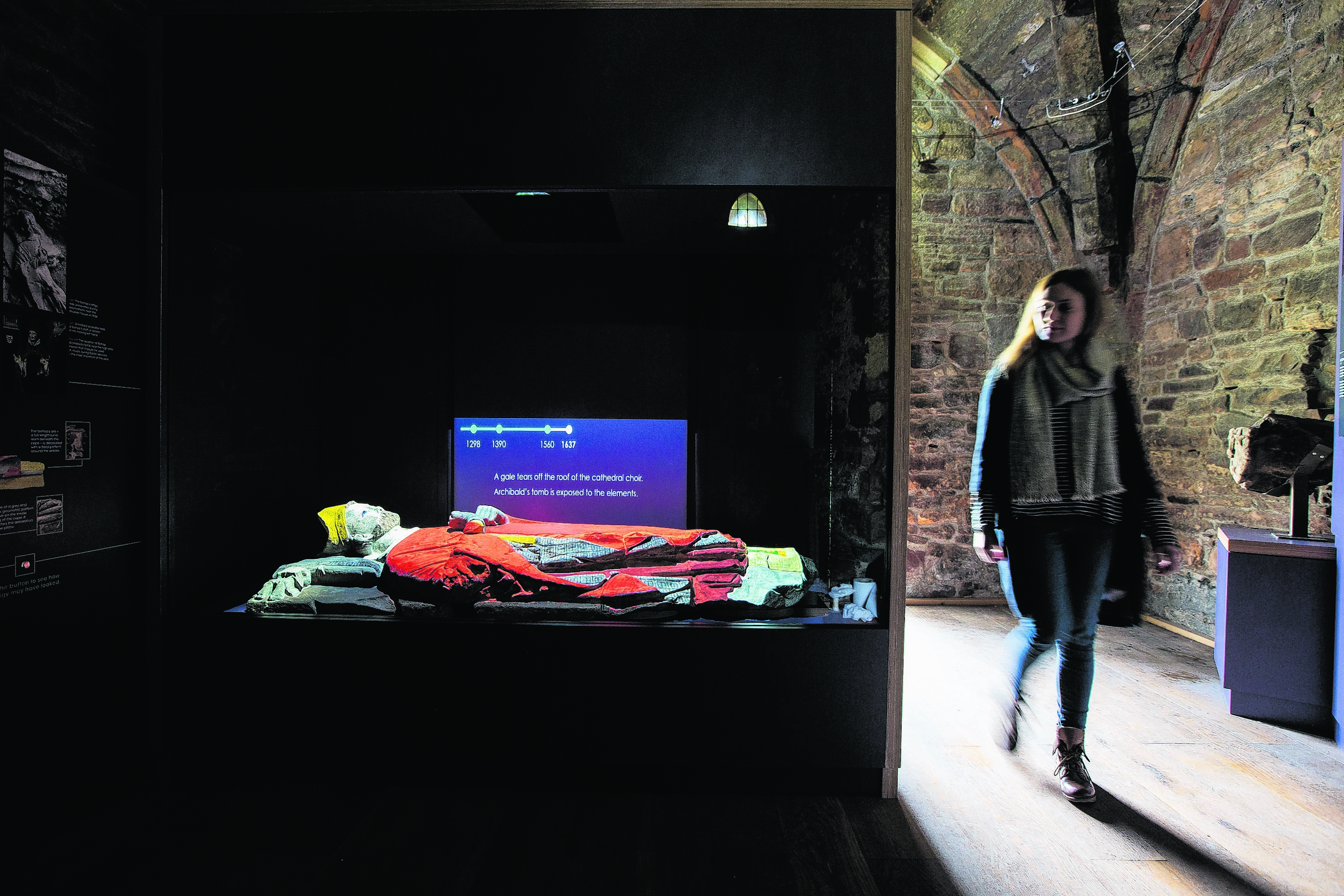
Elgin Cathedral was commissioned by the bishops of Moray – some of the most powerful people in mediaeval Scotland. After a disastrous fire tore through the cathedral precinct in 1270, Bishop Archibald of Moray set about rebuilding.
He took the opportunity to enlarge and enhance his church, building his tomb into the wall of the choir, close to the high altar. He was laid to rest there in 1298, with his brightly painted effigy set on top of his tomb.
Fiona Fleming, interpretation manager for Historic Environment Scotland, said: “Discovering the story of Bishop Archibald has been exciting, but one of the most interesting things about researching the stones is that we’ve been able to gain some insight into how ordinary people may have ‘read’ the carvings.
“We’ve found ourselves decoding messages that could be contained within the stones – from moral lessons drawn from the wonders of nature, to hidden surprises and startling warnings against sin.
“But we will never have all the answers, especially without knowing where the stones were situated in the cathedral. That’s why, in exploring the exhibition, we’re inviting people to ponder different possibilities in deciding what these carvings may have meant to mediaeval visitors before them.”
Entry to the cathedral, including the new exhibition, is free for Historic Scotland members. The cathedral is currently open daily from 9.30am-5.30pm. Admission costs £5.50 for adults, £3.30 for children. Contact: www.historic-scotland.gov.uk
NELSON’S TOWER, FORRES
Admiral Lord Horatio Nelson is one of Britain’s greatest naval heroes, famous for his bravery and inspirational leadership. Although Forres is a long way from the scene of his historic victories, he will never be forgotten here as standing high on Cluny Hill, which overlooks the town, is a memorial to him, Nelson’s Tower.
Built with money donated by members of the public, it opened on Trafalgar Day, October 21, 1812, when a 21-gun salute was fired by cannons said to have been with the fleet at the bombardment of Alexandria, which can still be seen at the entrance door to the tower today.
There’s a lovely woodland walk from Forres leading to the tower and it’s easy to tell if its open before setting out as this is signalled by the flying of a Red Ensign from the tower mast.
The tower has a fascinating selection of items on display including a fine print of Nelson’s dying scene donated by The Marquis of Huntly, while this year there’s an added attraction, a model of HMS Victory built by 74-year-old Barbara Nash, who spent two and a half years making the exact scale model of the 104-gun ship.
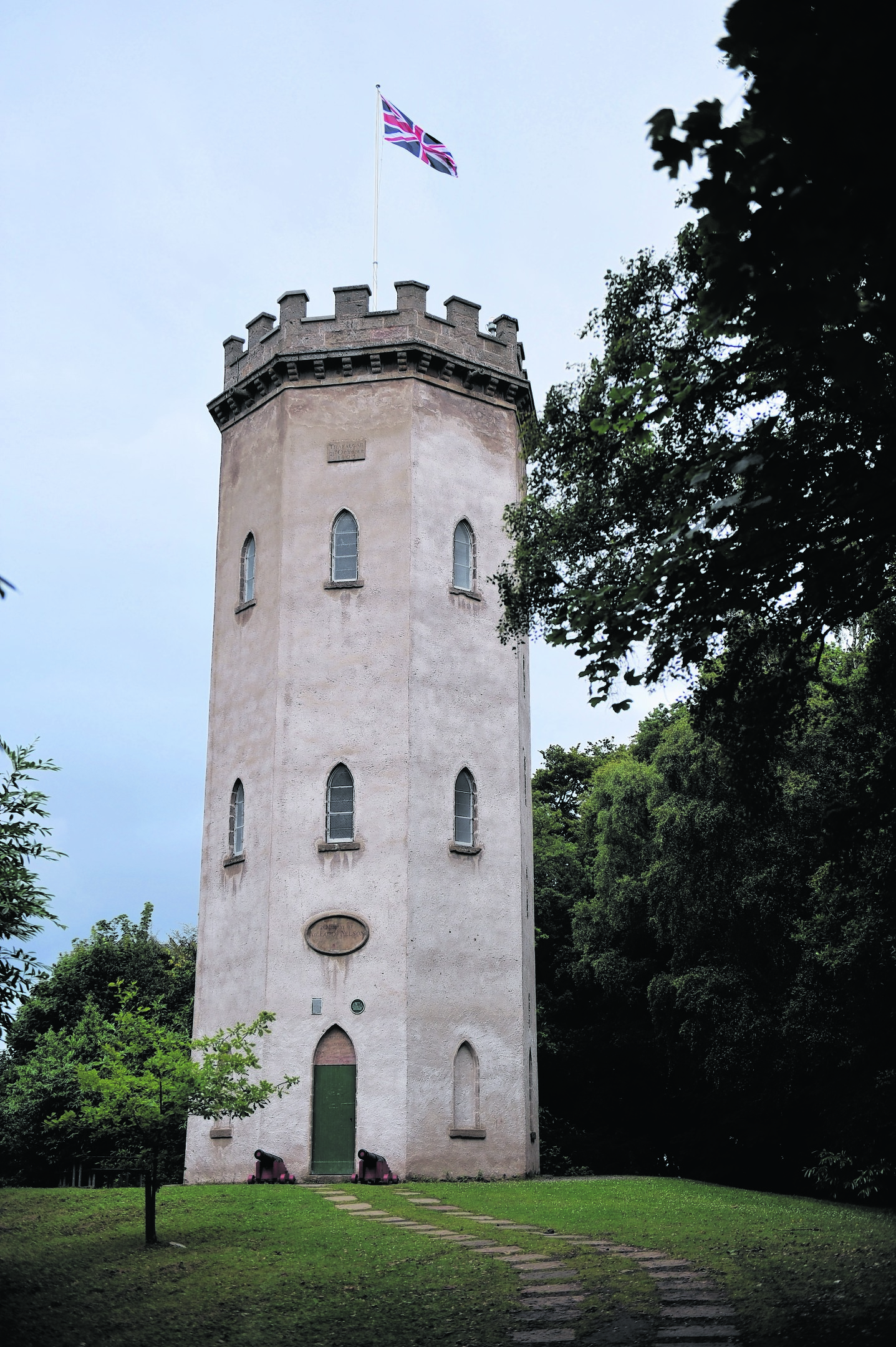
The tower is looked after by Forres Heritage Trust which also owns Forres Tolbooth, and one of the most popular things about the tower is that visitors can enjoy stunning 360-degree views across the countryside, Moray Firth and beyond, from its top deck.
Nelson’s Tower opens to the public again on tomorrow, Friday, April 1, and welcomes visitors until the end of September from 2-4pm daily. Admission is by donation.
